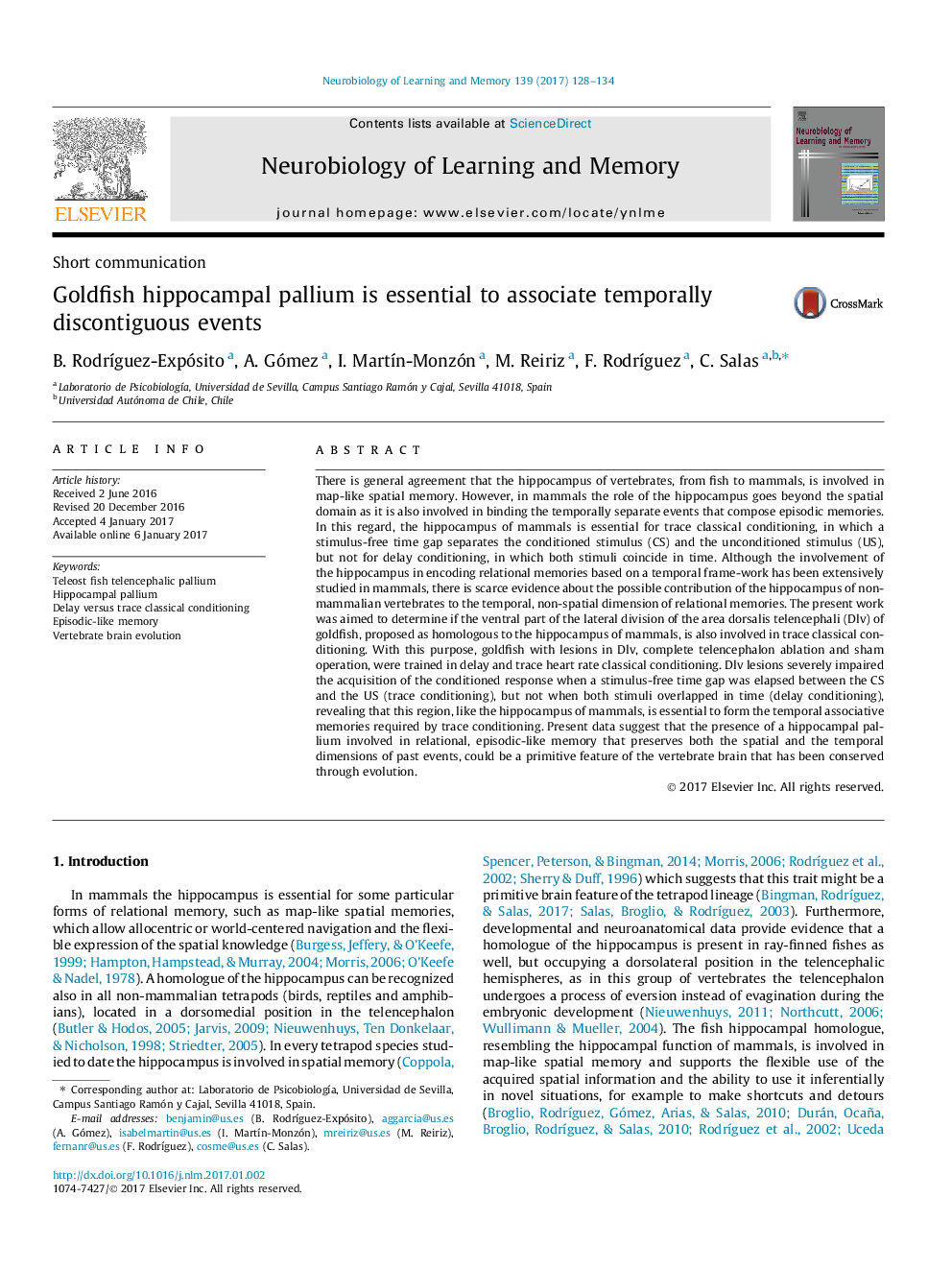| Article ID | Journal | Published Year | Pages | File Type |
|---|---|---|---|---|
| 5043308 | Neurobiology of Learning and Memory | 2017 | 7 Pages |
â¢Teleostean Dlv lesions impair trace but not delay heart rate classical conditioning.â¢Dlv telencephalic area is essential to form temporal associative memories.â¢The hippocampal role in relational memory seems to be conserved across vertebrates.
There is general agreement that the hippocampus of vertebrates, from fish to mammals, is involved in map-like spatial memory. However, in mammals the role of the hippocampus goes beyond the spatial domain as it is also involved in binding the temporally separate events that compose episodic memories. In this regard, the hippocampus of mammals is essential for trace classical conditioning, in which a stimulus-free time gap separates the conditioned stimulus (CS) and the unconditioned stimulus (US), but not for delay conditioning, in which both stimuli coincide in time. Although the involvement of the hippocampus in encoding relational memories based on a temporal frame-work has been extensively studied in mammals, there is scarce evidence about the possible contribution of the hippocampus of non-mammalian vertebrates to the temporal, non-spatial dimension of relational memories. The present work was aimed to determine if the ventral part of the lateral division of the area dorsalis telencephali (Dlv) of goldfish, proposed as homologous to the hippocampus of mammals, is also involved in trace classical conditioning. With this purpose, goldfish with lesions in Dlv, complete telencephalon ablation and sham operation, were trained in delay and trace heart rate classical conditioning. Dlv lesions severely impaired the acquisition of the conditioned response when a stimulus-free time gap was elapsed between the CS and the US (trace conditioning), but not when both stimuli overlapped in time (delay conditioning), revealing that this region, like the hippocampus of mammals, is essential to form the temporal associative memories required by trace conditioning. Present data suggest that the presence of a hippocampal pallium involved in relational, episodic-like memory that preserves both the spatial and the temporal dimensions of past events, could be a primitive feature of the vertebrate brain that has been conserved through evolution.
